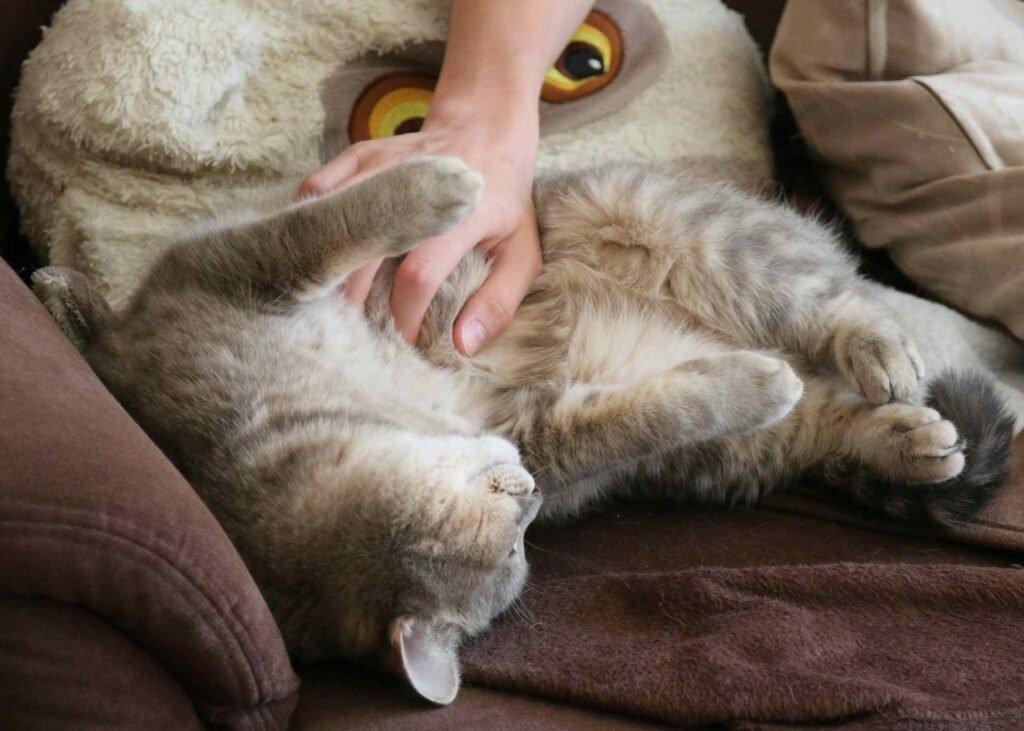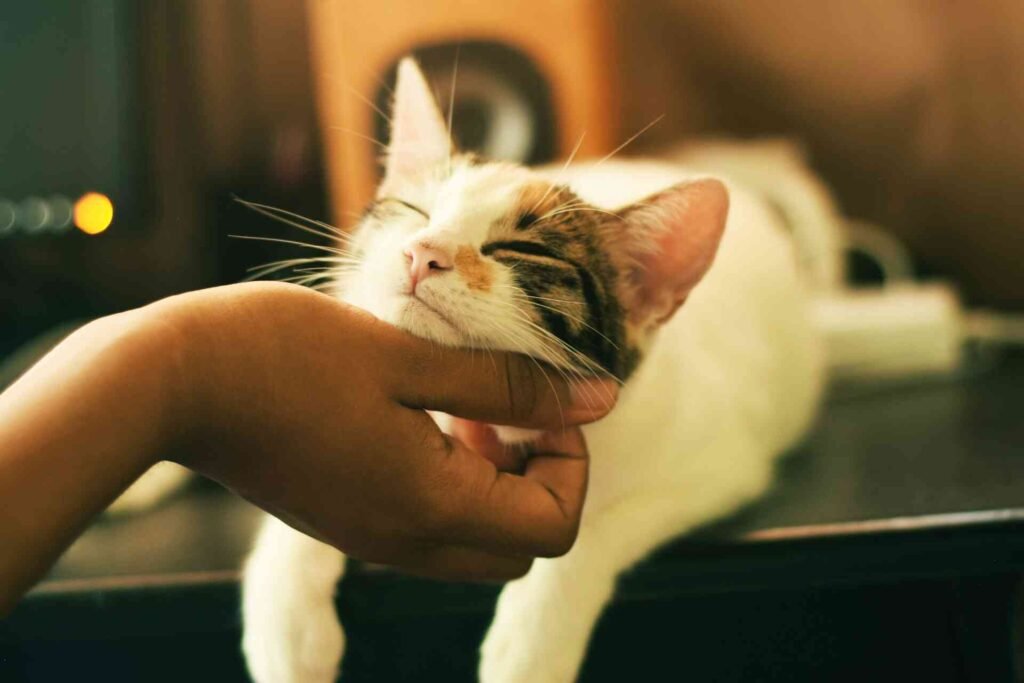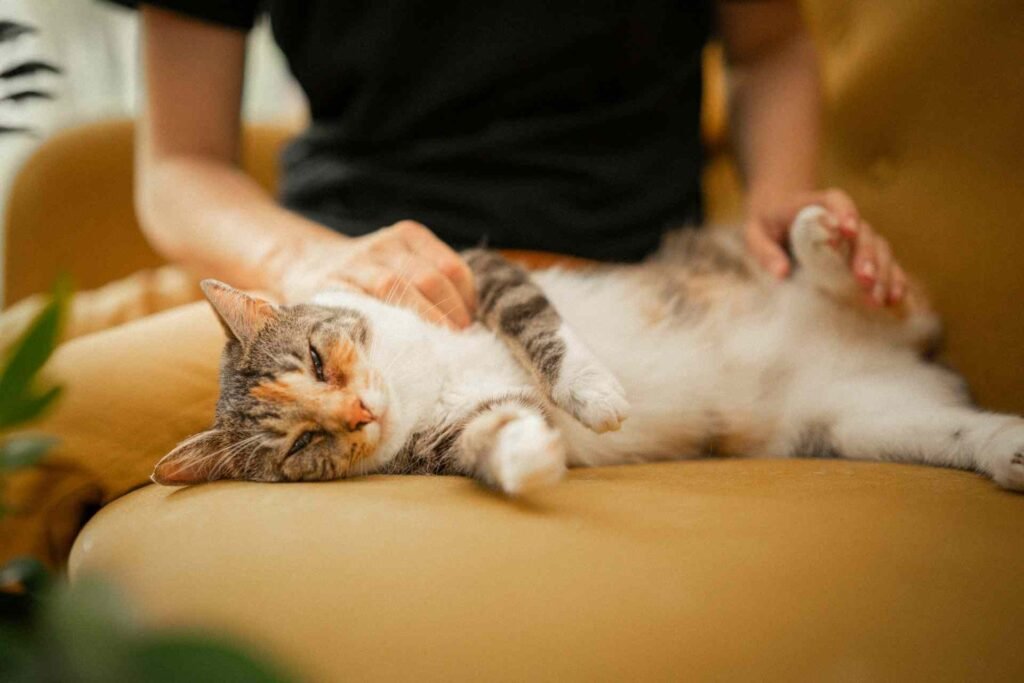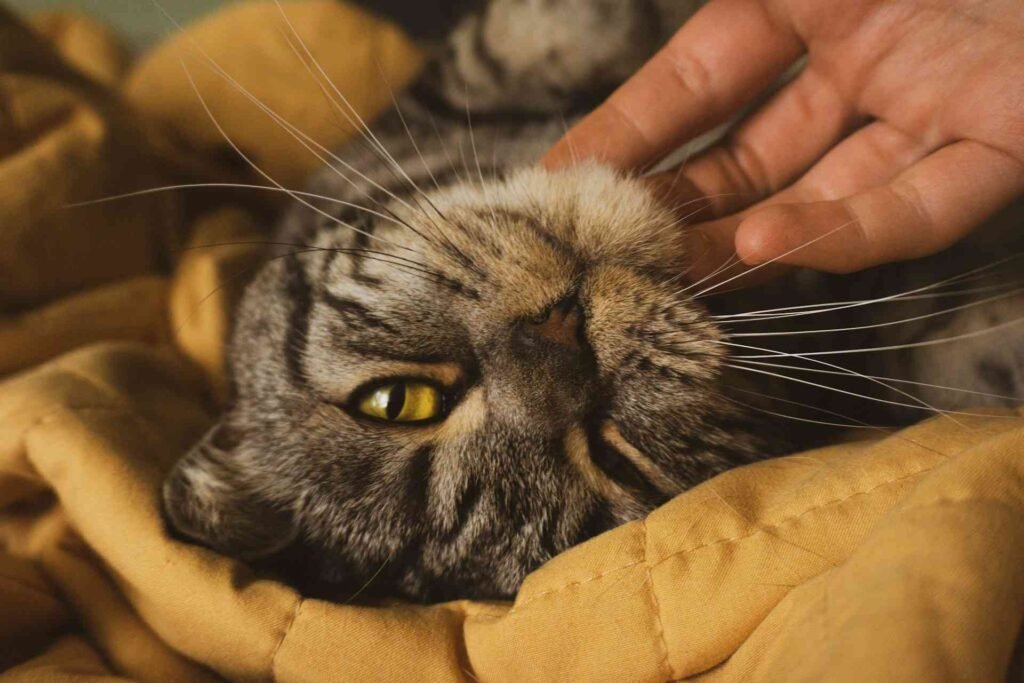Have you ever wondered why your cat suddenly kicks their leg when you scratch behind their ears, or why they seem to melt into pure bliss when you find that perfect spot under their chin? The world of cat sensitivity is far more fascinating than most pet owners realize, and understanding where cats are ticklish can transform the way you bond with your furry companion.
While cats don’t experience tickling quite the same way humans do, they definitely have tickle spots that trigger delightful responses. These sensitive areas can make your cat purr with contentment, playfully swat at your hand, or even perform those adorable involuntary leg kicks that melt our hearts. Let’s dive into the wonderful world of feline sensitivity and discover exactly where your cat loves to be touched.

Cat Ticklish Spots: The Science Behind the Sensation
Cats possess an incredibly sophisticated nervous system that makes them remarkably sensitive to touch. Unlike human tickling, which often involves a mix of pleasure and mild discomfort, feline sensitivity is primarily rooted in their evolutionary survival mechanisms and social bonding behaviors.
When we talk about where cats are ticklish, we’re really discussing areas where their nerve endings are particularly concentrated. These spots serve important biological functions, from grooming detection to social communication. The gentle stimulation of these areas releases endorphins, creating those blissful purring sessions we all cherish.
What makes this even more interesting is that each cat’s sensitivity levels can vary dramatically based on their personality, past experiences, and individual preferences. Some cats might dissolve into purring puddles at the slightest chin scratch, while others prefer a firmer touch on their shoulders.
The Top Cat Tickle Spots Every Owner Should Know
Behind the Ears: The Universal Sweet Spot
Nearly every cat has a soft spot for gentle scratches behind their ears. This area contains numerous nerve endings and is naturally difficult for cats to groom themselves, making your attention particularly welcome. When you find the right spot, you’ll often notice your cat tilting their head, closing their eyes, or even that telltale leg kick that shows you’ve hit the jackpot.
The skin behind a cat’s ears is incredibly thin and sensitive, which explains why this area ranks so high among cat ticklish spots. Many cats will actually lean into your hand when you scratch here, almost demanding more attention.
Under the Chin: The Purr Generator
The area directly under a cat’s chin is another universally beloved tickle spot. This region is rich with scent glands, which is why cats love having it rubbed. When you gently scratch under their chin, you’re not just providing physical pleasure but also helping them spread their scent, which is deeply satisfying on an instinctual level. Your cat might also enjoy a massage device for the chin and head region.
Most cats will lift their heads and expose their throats when you find this sweet spot, demonstrating incredible trust. It’s one of the most reliable places where cats are most ticklish and responsive to gentle touch.

The Cheek Zone: Social Bonding Central
Cat cheeks are loaded with scent glands and nerve endings, making them incredibly sensitive to touch. When cats rub against furniture, doorways, or your legs, they’re marking territory with these cheek glands. Gentle scratches and rubs in this area mimic natural social bonding behaviors between cats.
You’ll know you’ve found the right spot when your cat starts pressing their cheek into your hand, sometimes so enthusiastically that they lose their balance. This behavior shows just how much they’re enjoying the sensation.
Base of the Tail: The Controversial Favorite
The area right at the base of a cat’s tail, where it meets their lower back, is often extremely sensitive. Many cats absolutely love being scratched or gently pressed here, responding with raised hindquarters and intense purring. However, this spot can be overstimulating for some cats, so it’s important to pay attention to their body language.
When cats enjoy this type of touch, they’ll often raise their tail high, arch their back slightly, and may even knead with their front paws. It’s a sign of pure bliss, but always watch for signs that they’ve had enough.
Where Cats Are Most Ticklish: A Sensitivity Map
Understanding the varying levels of sensitivity across your cat’s body can help you become a master of feline massage. Here’s how different areas typically rank in terms of ticklish response:
| Body Area | Sensitivity Level | Typical Response | Best Technique |
|---|---|---|---|
| Behind ears | Very High | Head tilting, purring, leg kicks | Light circular scratches |
| Under chin | Very High | Head lifting, throat exposure | Gentle upward strokes |
| Cheeks | High | Head pressing, eye closing | Firm but gentle rubs |
| Base of tail | High | Back arching, tail raising | Light pressure, short sessions |
| Shoulder blades | Medium | Stretching, mild purring | Broader hand movements |
| Top of head | Medium | Head bumping, nuzzling | Palm pressure, light scratches |
This sensitivity map isn’t universal, though. Some cats might be incredibly responsive to shoulder blade scratches while remaining indifferent to chin rubs. The key is observing your individual cat’s preferences and respecting their boundaries.
Signs Your Cat Is Enjoying the Tickling
Recognizing when your cat is truly enjoying being touched versus merely tolerating it makes all the difference in your bonding sessions. Happy cats display several clear indicators that you’ve found their favorite tickle spots.
Purring is the most obvious sign, but it’s not the only one. Watch for slow blinking, which cats use to show contentment and trust. Many cats will also knead with their front paws when they’re particularly relaxed and happy. Some might even drool slightly, which, while perhaps not the most appealing response for us, is actually a sign of extreme contentment.

The famous “leg kick” response deserves special mention. When you hit just the right spot, particularly behind the ears or on the chin, some cats will involuntarily kick their back leg, similar to how dogs respond to belly rubs. This reflex action indicates you’ve found a particularly sensitive area. Paying attention to these subtle cues helps ensure that your tickling sessions remain enjoyable for both of you, rather than becoming overstimulating or stressful.
When Tickling Goes Too Far: Reading the Warning Signs
While most cats enjoy gentle touching in their sensitive areas, it’s crucial to recognize when they’ve had enough. Overstimulation can quickly turn a pleasant experience into a stressful one, and cats communicate their discomfort in several ways.
Tail thrashing or twitching is often the first sign that a cat is becoming overstimulated. Unlike the gentle swaying of a content cat, agitated tail movement is quick and sharp. Flattened ears are another clear warning signal, indicating that your cat is feeling defensive or uncomfortable.
Some cats may become mouthy when overstimulated, gently biting or grabbing your hand with their paws. This isn’t aggressive behavior but rather their way of saying “that’s enough for now.”
If your cat suddenly moves away, hides, or shows any signs of stress, it’s important to give them space. Every cat has different tolerance levels, and respecting these boundaries is essential for maintaining a strong, trusting relationship.
Age and Ticklish Sensitivity: How It Changes Over Time
A cat’s sensitivity to touch often changes throughout their lifetime, influenced by age, health, and experience. Kittens are typically more sensitive overall due to their developing nervous systems, while senior cats might have areas that become more or less sensitive due to arthritis or other age-related conditions.
Young cats often have more intense reactions to tickling, sometimes becoming overstimulated more quickly than mature cats. As cats age, they frequently become more selective about where and how they like to be touched. Senior cats may appreciate gentler approaches to their favorite spots.
Health conditions can also impact ticklish sensitivity. Cats with arthritis might find certain areas uncomfortable that they previously enjoyed having touched. Skin conditions, allergies, or recent medical procedures can temporarily change a cat’s response to touching in specific areas.
The Social Aspect: Tickling as Bonding
When we understand where cats are ticklish and respond appropriately to their preferences, we’re engaging in a form of social bonding that mirrors natural feline behavior. In the wild, cats who are comfortable with each other engage in mutual grooming, particularly around the head and neck areas where they cannot easily groom themselves.
By finding and gently stimulating your cat’s favorite tickle spots, you’re essentially taking on the role of a trusted companion. This type of interaction releases bonding hormones in both cats and humans, strengthening your relationship and increasing your cat’s overall sense of security and contentment.
This bonding behavior also helps cats associate human touch with positive experiences, making them more receptive to necessary handling for grooming, medical care, and general maintenance activities.
Tickling Techniques: Making the Most of Sensitive Spots
The way you approach your cat’s ticklish areas can make the difference between a blissful bonding session and an overstimulating experience. Start with gentle, slow movements and let your cat guide the intensity they prefer. Most cats respond better to fingertip scratches rather than full-hand rubbing in their most sensitive areas.

Timing is everything when it comes to successful cat tickling. Choose moments when your cat is already relaxed, perhaps during their usual cuddle time or when they’re seeking attention. Avoid trying to engage ticklish spots when your cat is in play mode, as they’re more likely to become overstimulated or interpret your touch as part of the game.
Creating positive associations with gentle touching can be enhanced by combining tickling sessions with other pleasant experiences like calm talking, treats, or favorite resting spots.
Common Mistakes to Avoid
Many well-meaning cat owners make the mistake of continuing to touch their cat’s ticklish areas even after the cat has shown signs of wanting a break. Remember that cats can become overstimulated much more quickly than dogs, and what starts as pleasure can rapidly become uncomfortable.
Avoid using tickling as a way to wake up or get attention from a sleeping cat. Cats need their rest, and disrupting their sleep patterns can create negative associations with being touched in sensitive areas.
Another common error is assuming all cats enjoy the same type of touch. While the basic ticklish areas are fairly universal, the intensity and duration preferences vary dramatically between individual cats. What works for one cat might be completely wrong for another.
Frequently Asked Questions
Do all cats have the same ticklish spots?
While most cats share common sensitive areas like behind the ears and under the chin, individual preferences vary significantly. Some cats might love having their cheeks rubbed while others prefer gentle scratches at the base of their tail. The key is observing your specific cat’s responses and preferences.
Can tickling help with cat bonding?
Absolutely! When done correctly, gentle stimulation of your cat’s favorite sensitive spots releases bonding hormones and mimics natural social grooming behaviors. This type of positive physical interaction strengthens the trust and connection between you and your cat.
Why does my cat kick their leg when I scratch behind their ears?
This involuntary leg kick is a natural reflex response to stimulation in highly sensitive areas. It’s similar to the scratch reflex in dogs and indicates that you’ve found a particularly nerve-rich spot. This response is completely normal and usually indicates your cat is enjoying the sensation.
How can I tell if my cat is overstimulated during tickling?
Watch for warning signs like tail thrashing, flattened ears, sudden movement away from you, or gentle biting. These behavioral cues indicate your cat has had enough stimulation and needs a break. Respecting these signals helps maintain positive associations with being touched.
Are there areas I should avoid when looking for ticklish spots?
Most cats dislike having their paws, belly, or the tip of their tail touched by humans. These areas are particularly vulnerable from an evolutionary standpoint, so cats tend to be defensive about them. Always let your cat guide you to their preferred spots rather than forcing touch in areas they seem uncomfortable with.
Does a cat’s age affect their ticklish sensitivity?
Yes, sensitivity often changes with age. Kittens may be more sensitive overall, while senior cats might develop preferences for gentler touch due to conditions like arthritis. Health changes can impact how cats respond to touch in previously enjoyed areas.
Conclusion
Understanding where cats are ticklish opens up a whole new dimension of bonding with our feline friends. From the universal appeal of behind-the-ear scratches to the individual quirks that make each cat unique, these sensitive spots offer us windows into our cats’ comfort and happiness.
The next time your cat settles in for some attention, take a moment to explore their favorite tickle spots with gentle, observant touches. You might discover that your dignified house cat turns into a purring puddle at the slightest chin scratch, or that they have a secret weakness for cheek rubs that makes them lean so far into your hand they nearly topple over.
So go ahead, become a detective of your cat’s ticklish spots. Your feline friend will thank you with purrs, head bumps, and perhaps even that adorable leg kick that reminds us just how wonderfully sensitive and responsive our cats truly are. After all, there’s nothing quite like the satisfaction of finding that perfect spot that makes your cat’s eyes close in bliss and their purr motor kick into high gear.
Looking for more? Explore our Cat Health section for more posts like this, visit the Blog for fun and insightful reads, or browse our full Cat Category for everything feline-related, from care to comfort.
Disclaimer: This article is for informational purposes only and does not substitute for professional veterinary advice. Always consult your veterinarian for diagnosis and treatment tailored to your cat’s individual needs. Please verify current product information directly on the retailer’s site before purchasing.
References
- Harris, C. R. (2012). Tickling. University of California, San Diego, CA, USA. http://charris.ucsd.edu/articles/Harris_EHB2012.pdf
Check out our most recent articles!
- Cats and Snow: Why Some Love It and Others Don’tSnow isn’t just uncomfortable for many cats, it’s a complete sensory overload. From cold paw pads to wet fur and changed landscapes, winter challenges feline comfort in unexpected ways. Learn how to recognize stress signals and create cozy alternatives for snow-averse cats.
- Christmas Names for Cats: From Classic to Creative Holiday IdeasNaming your holiday cat goes beyond festive fun. Discover why Christmas-inspired names age beautifully, spark instant connections with fellow pet lovers, and capture the warmth cats bring to our homes during the most magical season of the year.
- How to Keep Your Cat From Drinking Christmas Tree WaterYour cat’s obsession with Christmas tree water isn’t just annoying, it’s genuinely dangerous. From harmful bacteria to toxic additives, that festive reservoir poses real health risks. Discover practical solutions that protect your pet without sacrificing holiday cheer.
- Best Cat Toys for Christmas: The Ultimate Guide to Holiday JoyNot all Christmas gifts end up under the tree, some get batted across the floor at 3 AM. Explore the wonderful world of holiday cat toys that match your feline’s personality, from plush companions for cuddlers to high-tech options for the eternally energetic.
- Are Fake Christmas Trees Safe for Cats? A Holiday Safety GuideThat beautiful Christmas tree might look festive to you, but to your cat, it’s an irresistible climbing gym with built-in toys. Find out whether artificial trees are truly safer for cats and discover the hidden dangers lurking in your holiday decorations.
- The Best Christmas Gifts for Cats That’ll Actually Get Used (Not Ignored)Not all Christmas gifts land on the nice list with our feline friends. Discover which presents actually spark joy in cats and which ones end up gathering dust under the couch by New Year’s Day.
- Do Cats Eat Less in Winter? How Cold Weather Affects Your Cat’s AppetiteWinter brings more than just cold weather, it can completely change your cat’s eating habits. From bored indoor cats to outdoor ferals fighting to survive, discover what’s really driving those appetite changes and how to respond appropriately.
- Are Humidifiers Good for Cats? A Complete Safety & Health GuideNot all humidifiers are cat-safe, and some common practices could be toxic. Learn why cool mist beats warm mist, why essential oils are dangerous for felines, and how proper humidity levels between 30-50% support your cat’s breathing and coat health.
- How to Protect Leather Furniture From Cats (Without Losing Your Mind)Leather furniture and cat claws seem like natural enemies, but they don’t have to be. Learn why your cat is drawn to that expensive couch in the first place, and how simple redirects can save your furniture while keeping your cat’s natural behaviors satisfied.
- The Best Material for Cat Bowls: Protect Your Cat from BacteriaStainless steel, ceramic, or plastic, which material keeps your cat healthiest? We break down the science behind cat bowl materials, revealing why some harbor bacteria and others last decades without compromising your feline’s wellbeing.










